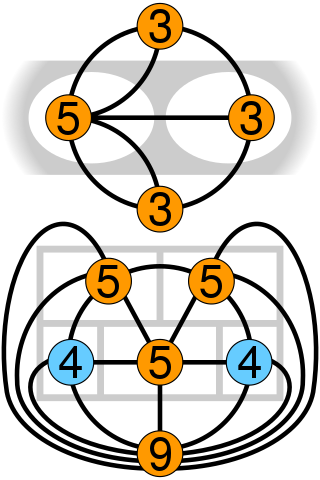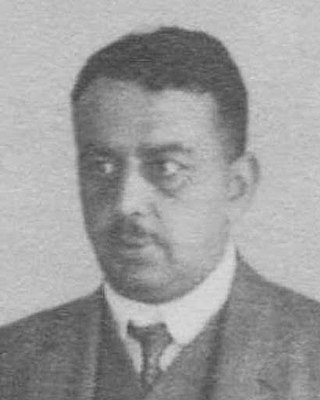
Herbert Fleischner (born 29 January 1944 in London) is an Austrian mathematician.

Herbert Fleischner (born 29 January 1944 in London) is an Austrian mathematician.
Fleischner moved to Vienna with his parents in 1946. He attended primary and secondary school in Vienna, graduating in 1962. After that he studied mathematics and physics at the University of Vienna; his main teachers were Nikolaus Hofreiter and Edmund Hlawka. He obtained his PhD degree in 1968; his official PhD supervisor was Edmund Hlawka, and his PhD thesis was entitled Sätze über Eulersche Graphen mit speziellen Eigenschaften, Sätze über die Existenz von Hamiltonschen Linien. However, Herbert Izbicki was the actual supervisor since he was a graph theorist. Fleischner started his academic career as an assistant at the Technical University of Vienna. The academic years 1970/71 and 1972/72 he spent at SUNY Binghamton as postdoctoral research associate and assistant professor; 1972/73 he spent at the Institute for Advanced Study as visiting member on the basis of an NSF grant. After that he returned to Vienna and started working at the Austrian Academy of Sciences (ÖAW), first at the Institute for Information Processing, then at the Institute of Discrete Mathematics. He worked at the ÖAW until the end of 2002, but took leaves to work at Memphis State University (now Memphis University, 1977), MIT (1978, Max Kade Grant), University of Zimbabwe (Academic Staff Development Project sponsored by Österreichischer Entwicklungskooperation and UNESCO, 1997–1999), West Virginia University (2002). [1] He als worked at Texas A&M University (SS 2003 und SS 2006).
Fleischner’s research focuses mainly on graph theoretical topics such as hamiltonian and eulerian graphs. One of his main achievements is the proof of the theorem according to which the square of every two-connected graph has a Hamiltonian cycle. This result (now known as Fleischner's theorem) had been submitted in 1971 and was published in 1974. [2]
Another milestone in his research was the solution of the „Cycle plus Triangles Problems“ posed by Paul Erdős; its solution came about in cooperation with Michael Stiebitz (TU Ilmenau). [3]
Fleischner published more than 90 papers in various mathematical journals; his Erdős-number is 2. His friendship with the Austrian painter de:Robert Lettner resulted in a cooperation in which certain graphs were transformed into paintings called mutations.
During 2002-2007 he was Chairman of the Committee for Developing Countries of the European Mathematical Society (EMS-CDC).

In the mathematical field of graph theory, a Hamiltonian path is a path in an undirected or directed graph that visits each vertex exactly once. A Hamiltonian cycle is a cycle that visits each vertex exactly once. A Hamiltonian path that starts and ends at adjacent vertices can be completed by adding one more edge to form a Hamiltonian cycle, and removing any edge from a Hamiltonian cycle produces a Hamiltonian path. Determining whether such paths and cycles exist in graphs are NP-complete.

In graph theory, an Eulerian trail is a trail in a finite graph that visits every edge exactly once. Similarly, an Eulerian circuit or Eulerian cycle is an Eulerian trail that starts and ends on the same vertex. They were first discussed by Leonhard Euler while solving the famous Seven Bridges of Königsberg problem in 1736. The problem can be stated mathematically like this:

In graph theory, a critical graph is an undirected graph all of whose proper subgraphs have smaller chromatic number. In such a graph, every vertex or edge is a critical element, in the sense that its deletion would decrease the number of colors needed in a graph coloring of the given graph. The decrease in the number of colors cannot be by more than one.

Dénes Kőnig was a Hungarian mathematician of Hungarian Jewish heritage who worked in and wrote the first textbook on the field of graph theory.

In graph theory, the degree of a vertex of a graph is the number of edges that are incident to the vertex; in a multigraph, a loop contributes 2 to a vertex's degree, for the two ends of the edge. The degree of a vertex is denoted or . The maximum degree of a graph , denoted by , and the minimum degree of a graph, denoted by , are the maximum and minimum of its vertices' degrees. In the multigraph shown on the right, the maximum degree is 5 and the minimum degree is 0.
Gabriel Andrew Dirac was a Hungarian-British mathematician who mainly worked in graph theory. He served as Erasmus Smith's Professor of Mathematics at Trinity College Dublin from 1964 to 1966. In 1952, he gave a sufficient condition for a graph to contain a Hamiltonian circuit. The previous year, he conjectured that n points in the plane, not all collinear, must span at least two-point lines, where is the largest integer not exceeding . This conjecture was proven true when n is sufficiently large by Green and Tao in 2012.

Edmund Hlawka was an Austrian mathematician. He was a leading number theorist. Hlawka did most of his work at the Vienna University of Technology. He was also a visiting professor at Princeton University and the Sorbonne. Hlawka died on February 19, 2009, in Vienna.

Václav (Vašek) Chvátal is a Professor Emeritus in the Department of Computer Science and Software Engineering at Concordia University in Montreal, Quebec, Canada, and a visiting professor at Charles University in Prague. He has published extensively on topics in graph theory, combinatorics, and combinatorial optimization.
Crispin St John Alvah Nash-Williams FRSE was a British mathematician. His research interest was in the field of discrete mathematics, especially graph theory.

In the mathematical field of graph theory, the Chvátal graph is an undirected graph with 12 vertices and 24 edges, discovered by Václav Chvátal in 1970. It is the smallest graph that is triangle-free, 4-regular, and 4-chromatic.
Douglas Brent West is a professor of graph theory at University of Illinois at Urbana-Champaign. He received his Ph.D. from Massachusetts Institute of Technology in 1978; his advisor was Daniel Kleitman. He is the "W" in G. W. Peck, a pseudonym for a group of six mathematicians that includes West. He is the editor of the journal Discrete Mathematics.
Lajos Pósa is a Hungarian mathematician working in the topic of combinatorics, and one of the most prominent mathematics educators of Hungary, best known for his mathematics camps for gifted students. He is a winner of the Széchenyi Prize. Paul Erdős's favorite "child", he discovered theorems at the age of 13. Since 2002, he has worked at the Rényi Institute of the Hungarian Academy of Sciences; earlier he was at the Eötvös Loránd University, at the Departments of Mathematical Analysis, Computer Science.
Miklós Simonovits (4 September 1943 in Budapest) is a Hungarian mathematician who currently works at the Rényi Institute of Mathematics in Budapest and is a member of the Hungarian Academy of Sciences. He is on the advisory board of the journal Combinatorica. He is best known for his work in extremal graph theory and was awarded Széchenyi Prize in 2014. Among other things, he discovered the method of progressive induction which he used to describe graphs which do not contain a predetermined graph and the number of edges is close to maximal. With Lovász, he gave a randomized algorithm using O(n7 log2n) separation calls to approximate the volume of a convex body within a fixed relative error.
Paul Allen Catlin was a mathematician, professor of mathematics who worked in graph theory and number theory. He wrote a significant paper on the series of chromatic numbers and Brooks' theorem, titled Hajós graph coloring conjecture: variations and counterexamples.

In graph theory, a branch of mathematics, Fleischner's theorem gives a sufficient condition for a graph to contain a Hamiltonian cycle. It states that, if is a 2-vertex-connected graph, then the square of is Hamiltonian. It is named after Herbert Fleischner, who published its proof in 1974.
Michael David Plummer is a retired mathematics professor from Vanderbilt University. His field of work is in graph theory in which he has produced over a hundred papers and publications. He has also spoken at over a hundred and fifty guest lectures around the world.
Arthur Hobbs is an American mathematician specializing in graph theory. He spent his teaching career at Texas A&M University.

Mark Norman Ellingham is a professor of mathematics at Vanderbilt University whose research concerns graph theory. With Joseph D. Horton, he is the discoverer and namesake of the Ellingham–Horton graphs, two cubic 3-vertex-connected bipartite graphs that have no Hamiltonian cycle.
Andreas Brandstädt is a German mathematician and computer scientist.

In graph theory, the Lovász–Woodall conjecture is a long-standing problem on cycles in graphs. It says: